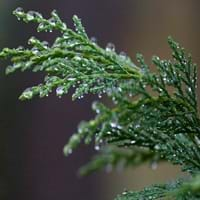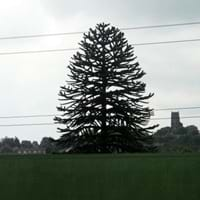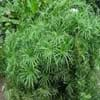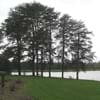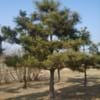Life Span
Perennial
Perennial
Type
Needled or Scaled Evergreen
Needled or Scaled Evergreen
Origin
Not Available
Argentina, Chile
Types
not available
not available
Habitat
All sorts of environments, Alpine Meadows, High elevation, Hilly upland habitat
Subtropical forests
USDA Hardiness Zone
6-9
7-11
Sunset Zone
3b, 4, 5, 6, 7, 8, 9, 10, 11, 12, 13, 14, 15, 16, 17, 18, 19, 20, 21, 22, 23, 24
H1, H2, 4, 5, 6, 7, 8, 9, 14, 15, 16, 17, 18, 19, 20, 21, 22, 23, 24
Habit
Pyramidal
Oval or Rounded
Minimum Width
Not Available
Flower Color
Not Available
Green
Flower Color Modifier
Bicolor
Bicolor
Leaf Color in Spring
Green, Blue Green, Gray Green
Green, Dark Green
Leaf Color in Summer
Green, Blue Green, Gray Green
Dark Green
Leaf Color in Fall
Green, Blue Green, Gray Green
Dark Green
Leaf Color in Winter
Green, Blue Green, Gray Green
Dark Green
Leaf Shape
needle shaped
Needle like
Plant Season
Spring, Summer, Fall, Winter
Spring, Summer, Fall, Winter
Sunlight
Full Sun
Full Sun, Partial Sun
Type of Soil
Clay, Loam
Clay, Loam, Sand
The pH of Soil
Acidic, Neutral, Alkaline
Acidic, Neutral, Alkaline
Soil Drainage
Well drained
Well drained
Bloom Time
All year
Not Available
Tolerances
Cold climate, Deer resistant
Drought
Where to Plant?
Ground
Ground, Pot
How to Plant?
Hardwood Cuttings, Transplanting
Tip cutting
Plant Maintenance
Medium
Medium
Watering Requirements
Average Water Needs
Allow to dry out slightly between watering
In Summer
Lots of watering
Lots of watering
In Spring
Moderate
Moderate
In Winter
Average Water
Average Water
Soil pH
Acidic, Neutral, Alkaline
Acidic, Neutral, Alkaline
Soil Type
Clay, Loam
Clay, Loam, Sand
Soil Drainage Capacity
Well drained
Well drained
Sun Exposure
Full Sun
Full Sun, Partial Sun
Pruning
Prune for size control, Prune if you want to improve plant shape, pruning needed for strong structure, Remove damaged leaves, Remove dead branches, Remove dead leaves
Remove damaged leaves, Remove dead branches, Remove dead leaves
Fertilizers
All-Purpose Liquid Fertilizer, slow-release fertilizers
All-Purpose Liquid Fertilizer
Pests and Diseases
Canker, Root rot, Stigmina needle blight
Anthracnose, Branch Droop, Root rot, Yellow Leaves
Plant Tolerance
Cold climate, Deer resistant
Drought
Flowers
Not Available
Insignificant
Flower Petal Number
Single
Single
Fragrant Bark/Stem
No
Yes
Foliage Texture
Fine
Fine
Foliage Sheen
Matte
Glossy
Attracts
Birds
Not Available
Allergy
Unknown
Not Available
Aesthetic Uses
Formal Garden, Ornamental use, Showy Purposes, Woodland margins
Showy Purposes, Used as Christmas tree
Beauty Benefits
Not Available
Not Available
Environmental Uses
Air purification
Air purification
Medicinal Uses
Not Available
Not Available
Part of Plant Used
Not Available
Whole plant
Other Uses
Acts as a natural source of rain water for birds and insects., deer resistant, Used as Christmas Tree
Used in Furniture, Useful for shade
Used As Indoor Plant
No
Yes
Used As Outdoor Plant
Yes
Yes
Garden Design
Feature Plant, Hedges, Mixed Border, Screening, Wind Break
Container, Feature Plant
Botanical Name
X CUPRESSOCYPARIS leylandii
ARAUCARIA araucana
Common Name
Leylandii
Monkey Tail Tree, Chilean Pine, Pehuén
In Hindi
Leyland cypress
Monkey Puzzle Tree
In German
Leyland-Zypresse
Chilenische Araukarie
In French
Cyprès de Leyland
Araucaria du Chili
In Spanish
Cupressus leylandii
araucaria o pehuén
In Greek
Leyland Cypress
Monkey Puzzle Tree
In Portuguese
Cipreste-de-leyland
Monkey Puzzle Tree
In Polish
Cyprysowiec Leylanda
Araukaria chilijska
In Latin
Leyland Cypress
Monkey Puzzle Tree
Phylum
Coniferophyta
Pinophyta
Class
Pinopsida
Pinopsida
Family
Cupressaceae
Araucariaceae
Genus
Cupressus
Araucaria
Clade
Not Available
Not Available
Tribe
Not Available
Not Available
Subfamily
Not Available
Not Available
Number of Species
Not Available
Not Available
Season and Care of Leyland Cypress and Monkey Puzzle Tree
Season and care of Leyland Cypress and Monkey Puzzle Tree is important to know. While considering everything about Leyland Cypress and Monkey Puzzle Tree Care, growing season is an essential factor. Leyland Cypress season is Spring, Summer, Fall and Winter and Monkey Puzzle Tree season is Spring, Summer, Fall and Winter. The type of soil for Leyland Cypress is Clay, Loam and for Monkey Puzzle Tree is Clay, Loam, Sand while the PH of soil for Leyland Cypress is Acidic, Neutral, Alkaline and for Monkey Puzzle Tree is Acidic, Neutral, Alkaline.
Leyland Cypress and Monkey Puzzle Tree Physical Information
Leyland Cypress and Monkey Puzzle Tree physical information is very important for comparison. Leyland Cypress height is 1,830.00 cm and width 240.00 cm whereas Monkey Puzzle Tree height is 1,520.00 cm and width Not Available. The color specification of Leyland Cypress and Monkey Puzzle Tree are as follows:
Leyland Cypress flower color: Not Available
Leyland Cypress leaf color: Green, Blue Green and Gray Green
Monkey Puzzle Tree flower color: Green
- Monkey Puzzle Tree leaf color: Green and Dark Green
Care of Leyland Cypress and Monkey Puzzle Tree
Care of Leyland Cypress and Monkey Puzzle Tree include pruning, fertilizers, watering etc. Leyland Cypress pruning is done Prune for size control, Prune if you want to improve plant shape, pruning needed for strong structure, Remove damaged leaves, Remove dead branches and Remove dead leaves and Monkey Puzzle Tree pruning is done Remove damaged leaves, Remove dead branches and Remove dead leaves. In summer Leyland Cypress needs Lots of watering and in winter, it needs Average Water. Whereas, in summer Monkey Puzzle Tree needs Lots of watering and in winter, it needs Average Water.
